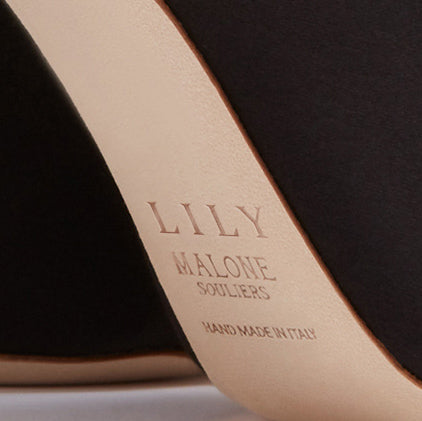A look at the evolution of the wedding shoe.
The search for the dress may be your priority when planning your wedding day, but as soon as you’ve found ‘the one’, the next step is surely to uncover your dream shoes. Heels or flats? Sandals or pumps? Lace or satin? The options are certainly plentiful. Before you decide on the perfect pair, however, join us on a journey through time as we explore the fascinating history of wedding shoes, from their humble beginnings to the many styles available today.
Some of the very first
wedding shoes are believed to have been simple sandals worn in ancient times. Often made from leather or woven grass, brides would wear the sandals to symbolise their married status. Comfort took precedence over style, as their pared-back design was intended for walking long distances in. Slowly, decorative elements – such as embroidery and beading – were introduced.
By the Middle Ages, bridal shoes often featured a pointed toe, then a symbol of wealth and status. Often sat upon a two-or-so inch heel, some were adorned with precious gems and metal embellishments. Perhaps surprisingly, men’s monk strap shoes have been around since the High Middle Ages (around the years of 1000 to 1350) – today, they are viewed as a stylish, but less obvious, choice for grooms.
The silks and satins we associate with bridal footwear today were first coming into fashion during the 18th and 19th centuries. Lace, ribbons, and beads all made for decorative accents then, just as they do now. However, for a lot of this time, wedding dresses varied greatly in colour – from green all the way through to black – so shoes did, too.
During the Regency era, ‘half boots’ grew in popularity for everyday wear, as more women took up pastimes such as walking and horse riding. Naturally, their practicality gave way to more elaborate iterations where weddings were concerned.
On to the Victorian era, when Queen Victoria herself set the precedent for what was deemed fashionable. In fact, she is credited with popularising the white wedding dress. For her marriage to Prince Albert in 1840, she wore a pair of white satin flats decorated with ribbons, made by her shoemakers Gundry & Son. Queen Victoria was also known for her love of dainty boots with elasticated side panels, a style that was adopted by many brides of the time.
It was towards the end of the 1850s that shoes with modest heels came back into fashion, after nearly 50 years of flat footwear. During the 1880s, heel shapes became more waisted, similar to the 18th century ‘Louis’ heel. A typical pair of bridal shoes from around this time might have been crafted from white silk satin and adorned with a simple bow at the round toe.
The 1920s saw hems rise, meaning shoes were more on show than in previous years. However, footwear was typically fairly simple in its design so as not to detract from the heavily embellished dresses and large bouquets that were à la mode. Mary Janes and T-bar sandals were the silhouettes to be seen in.
In 1947, when Queen Elizabeth II married Prince Phillip, she matched her Norman Hartnell-designed duchesse satin gown with a pair of slingbacks by Rayne Shoes. The crossover sandals were detailed with a silver buckle embellished with a seed pearl to complement the approximately 10,000 pearls that adorned her wedding dress.
During the 1950s and ‘60s, simple stiletto-heeled pumps – as well as the aforementioned Mary-Janes and T-bar sandals – were the shoes of choice. The 1970s saw the introduction of platform soles and higher heels, as women continued to experiment with their wedding day style. Iconic designer, Terry de Havilland, paved the way with luxury wedding shoes with romantic touches such as heart-appliqued block heels and crystal-embellished buckles.
Today, just as weddings themselves take on so many different guises,
bridal shoes run the gamut from lace booties and strappy sandals to satin mules, leather flats, and even espadrilles. A key component of any wedding day ensemble, the bridal shoes you choose will soon come to hold treasured memories of your most special day.





